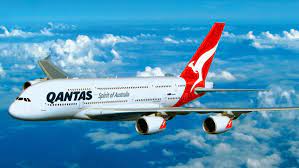 The list of sins is lengthy and growing with diseased relish. Australia’s first and for decades only international airline, Qantas, is looking rather tattered of late. Its reliability is becoming something of the past, its standing diminished in an age of diminished international carriers.
The list of sins is lengthy and growing with diseased relish. Australia’s first and for decades only international airline, Qantas, is looking rather tattered of late. Its reliability is becoming something of the past, its standing diminished in an age of diminished international carriers.
There was a time when taking a Qantas flight involved experiencing clean, solid goodness, with the softening effects of regular and, for the most part, reliable service. Nothing ever too flash, but reliable before finding your feet on chaotic ground.
Its minted reputation was enough to earn it a mention in Barry Levinson’s Rain Man, a 1988 production featuring a tormented Charlie Babbitt (Tom Cruise) and his autistic brother Raymond (Dustin Hoffman). Raymond, as cinematic history notes, was utterly enamoured with Qantas’s immaculate safety record. Various US airlines, with their documented crashes, could hardly match it. Raymond duly regales Charlie with a number of lethal examples. As Qantas did not fly out of Cincinnati, the car proved to be the only viable means of transport.
The current image of the airline is one of losses, be it in revenue, reputation and service. This year, with bruising revelation, Qantas found out that it was no longer considered the safest of the globe’s airlines. In rankings calibrated for an annual safety table by Airlineratings.com, which considers 385 carriers worldwide and their performance in terms of crashes, incident records, aircraft ages, operational innovation and COVID-19 protocols, the flying kangaroo barely figured. That top honour went – and here it must have hurt – to Air New Zealand.
Geoffrey Thomas, the editor-in-chief of the Australian website making such bold assertions was adamant that Air NZ had an “excellent incident record, number of cockpit innovations, pilot training and very low fleet age”. While Thomas sounds like a desperate geriatric examining a catwalk of fecund models, the overall sense of decline in Qantas is palpable.
The Qantas of today is not one of smooth reliable travel but indifference, disruption and disappointment. It features queues, chaos and disequilibrium, from passengers to the workplace. There are staffing problems (the taking of sick leave is regular), frequent cancellations, constant delays and instances of lost baggage.
The views of one Tom, as reported by the ABC, reveal the conditions that the airline is operating under. “There is no one to talk to and when you go to work you are basically on your own. It’s like we’re running a virtual airline.”
The new law of such a virtual airline is unpredictability. “Keeping to departure times has always been sacred in the airline industry. In the past we would be kept informed – you will be 10 minutes late, 15 minutes late. Now you must pursue the information yourself and they may, or may not, know the answer.”
According to Tom, who has worked for three decades with the company, he had “never seen anything like it.” He cites a flight he so happened to board earlier this year, finding no drinking water onboard and an incomplete load sheet. (For the curious, the load sheet is essential in terms of weight and balance data, enabling the pilot to determine the load on the aircraft and how its distribution.)
The Australian Transport Workers’ Union has also roared its disapproval at the airline. In a 2020 report, the union notes the nastier side of the carrier’s sharp practice. QGS, a Qantas creation, is noted as being filled by part-time workers, with QGS contacts guaranteeing work to the value of only hours. The report also notes the sacking of 5,000 employees, only to have them replaced by 9,000 part-time workers employed through subsidiary outlets.
During the course of the pandemic, this predatory beast of the aviation industry received A$2 billion worth in Australian taxpayer funds. It is worth noting, on this score, that other airlines did not qualify, notably Virgin Australia, for the largesse of the Australian government. Qantas, with cocksure confidence, argued for its unique standing in the Australian aviation industry, boasting that it did not need a bailout. However, just on the off chance it did require help, it would have to receive A$4.2 billion as a proportional measure to what Virgin might receive, as its revenue at the time was three times that of Virgin’s.
This staggering inversion of the survival of the fittest argument has seen the airline disappoint with dreary consistency. Last month the company offered A$50 worth of vouchers, loyalty status extensions and lounge passes to frequent flyers by way of apology for the mess the airline had put customers in.
This meagre act of contrition is hardly likely to cover the diminished service customers have come to expect of an Australian carrier of such insufferable pride. It certainly meant less with a video message sent to frequent flyer members featuring chief executive Alan Joyce. “On behalf of the national carrier I want to apologise and assure you we are working hard to get back to our best,” the unconvincing CEO states, causing a residue of bile to form in any one caring to listen.
The Australian airline is hardly alone in this general malaise. Airlines across the globe are spluttering along, providing even worse services than what they provided before. Flights are fewer and, it follows, passengers. Keeping these air hulks in the skies is proving increasingly challenging. But shine has come off this particular Australian jewel, and it remains to be seen whether it is recoverable from the conundrum it, and its owners, find themselves in.










